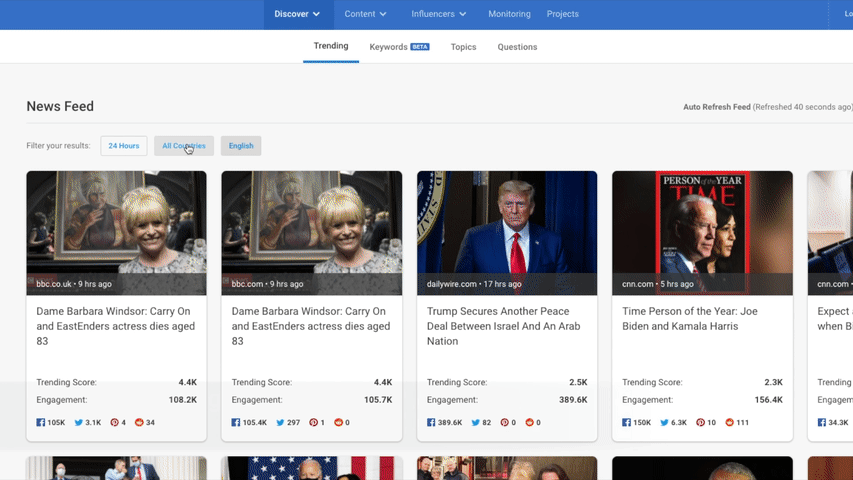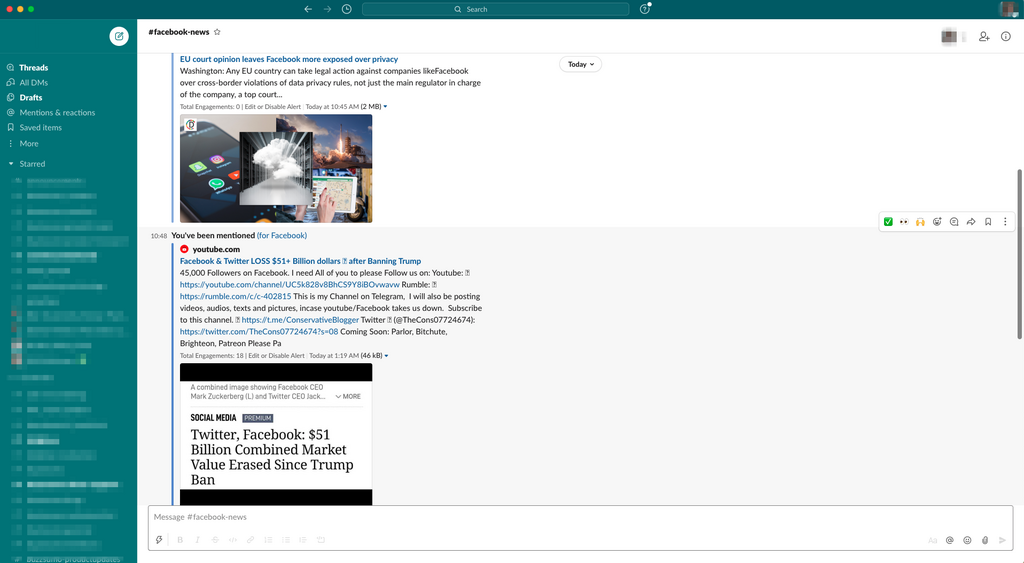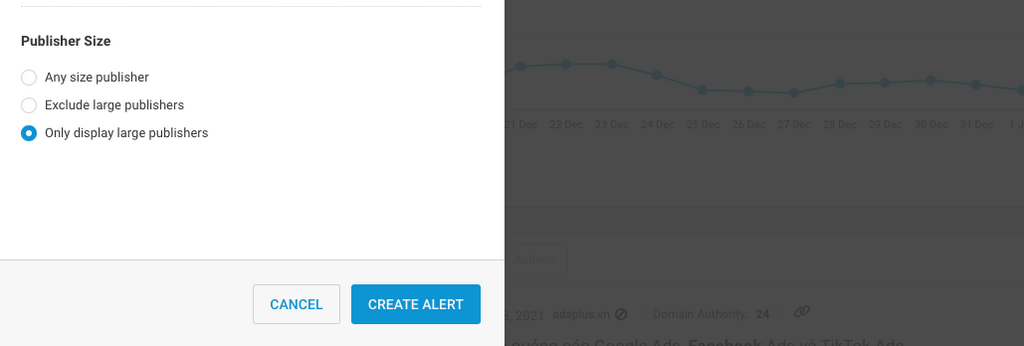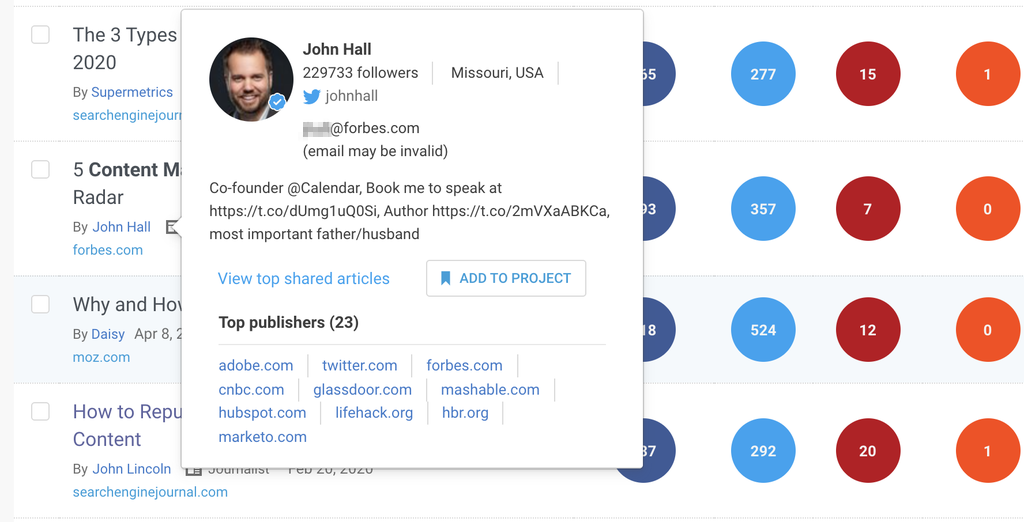It’s my job to write about all the social media trends over at Brandwatch as a data journalist. If there’s one thing I know, it’s the power and absolute need to master the art of trend spotting.
Trend spotting can be extremely time consuming if you are manually looking for trends all day everyday – but we thankfully live in the 21st century and there are programs for it.
Today I’m running you through three of the most important things that have helped me when it comes to trend spotting.
1. Make the most of curated trend spotting content
One of my favourite roles at Brandwatch is crafting the Brandwatch Bulletin. It drops every Monday and Friday – you can sign up here — inspired by trends we’ve found from that day, week or month.
While a lot of my trend spotting is done monitoring social conversation in Brandwatch, I also find some really great stories to fuel that analysis with curated trend content.
One of my go-tos is BuzzSumo’s Top Stories Email Digest which gives me trending stories straight to my inbox every single morning.
I use it to see what’s trending within specific Curated Feeds, ie. pre-categorized topics of diverse but common interests – like gaming. This helps me quickly scan for bulletin ideas or content for social media.
I also often set up my own trend spotting feeds around my niche areas of interest for that month or quarter. While generic topics give me a broad understanding of what’s going on in the world, sometimes I want to know about what’s trending within a specific topic. Setting up a Custom Feed based on my focus subject takes all of thirty seconds.
What’s great about signing up to curated content is that there’s hardly any leg work involved – that means I spend less time trend spotting and more time newsjacking. Perfect.
Recently, BuzzSumo alerted me to the momentous problems with Cyberpunk 2077 because I created a specific Custom Feed.
I was able to partner this content data with consumer conversation about the game in Brandwatch Consumer Research, to find out the feelings of gamers on social media and build a short story around it.
2. Build trend spotting into your daily workflow
What do I mean by this? Integrate. If you can, build trend spotting into your every day. Subscribe to newsletters, set alerts, sync trend data into your most used platforms, switch on social notifications when important trend spotting influencers post. Do the initial legwork, so you can sit back and let the trend come to you.
One workflow I find so useful is integrating trend news with my Slack. Like many companies, Slack is the one platform we Brandwatch folk all log in to, without fail, every. single. day – especially now we’re all working from home. It’s therefore a no-brainer that we get our trend news here too.
To do this, I usually set up Alerts in the Monitoring part of BuzzSumo, based on evergreen news stories that I’ll always want to know about.
Here’s an example of a ‘Facebook news’ channel I have set up for important Facebook news stories that exceed one thousand shares.
We always want to know about Facebook in the Brandwatch content department, so it’s great to have a live newsfeed of highly shared headlines around this topic.
We’re aiming to refine this trend feed even further by amending the alert to add a publisher size filter. This will help us focus on only the best headlines written about Facebook by large publishers.
If I find an interesting story in our Slack channel, I hop back into BuzzSumo and continue exploring, which is what I did here when I saw the news that Facebook had blocked Trump.
I wanted to see how this compared to news coverage of other platforms who’d also banned Trump, so I set up alerts for them over the week.
This is a great example of the kind of content I would use in a blog or social post.
Building trends into my daily workflows like this means I never miss a beat, and helps me create up-to-the-minute trend content with minimal effort.
This automated workflow is also great for another kind of trend spotting: crisis management. We use Slack to track mentions of Brandwatch in the same way, to make sure we know what’s being said about our brand at all times.
3. Beware of fake news
As a data journalist using social media to write about emerging trends, it’s absolutely vital for me to be aware of misinformation before it becomes familiar to people, because familiarity results in a trend clogging social media conversation – it’s like going to the airport without a passport; stressful, sweaty and silly.
“A particular piece of information, no matter how fake it is, can become familiar. If it’s familiar it gets into the fluency of thinking. It becomes intuitive and easy to retrieve. Information that’s easily retrievable is given more value” said Dr Delia Dumitrescu, a lecturer in Media, Culture, and Politics at the University of East Anglia, when she spoke with Brandwatch for Fake News Week 2020, “… it’s just very difficult to dismiss it later on.”
This is especially true because the world around us is changing so rapidly. From Covid-19 to the climate crisis and international relations, there’s hundreds, if not thousands of new stories every day. With this overload of information, it’s no surprise that miscommunication and unreliable sources can give rise to fake trends.
If, as a content creator, you’re sharing unreliable information, it won’t be long before your audience loses trust in you.
One way we keep an eye on misinformation is by paying close attention to the authority of the author and publication when we’re alerted to a story that’s blowing up on social media.
This happened when we were tracking the climate crisis online for a report. BuzzSumo alerted us to a climate change story which was receiving abnormal engagement.
As soon as we saw it in our inbox, we recognized that the article, which had been engaged with 4.2 million times, had come from a known conspiracy site called Natural News.
In this instance, the fake news peddler was known to us, and we avoided including this article in our analysis. But, if we’re ever unsure about the validity of a story, we look for more information within the Monitoring part of the platform to give us clues, including:
- The publication name, logo and website – to spark recognition
- The headline & link to the article – to scan for legitimacy
- The domain authority – to look for lower authority scores, as is common of lower quality sites
- The author name and a link to their other articles – to see if their other headlines are factual or generate engagement
- A Journalist Profile – to check if the journalist is credible and well known. If they are, this outreach tool will appear with their linked social account, email address, publications they’ve written for and more, which is a good sign that the article is legitimate.
If you’re trend spotting, it’s so important to have information like this on hand to help you sort the good from the bad, and focus on creating and sharing only quality insights.
So, there they are. My top 3 tips for trend spotting – I hope they’ve given you some good ideas!
Now you know how to spot trends, head over to our trendjacking guide to discover how to use them to boost visibility and make your brand a part of the conversation.
Let us know your tips for trend spotting via @BuzzSumo and, if you want to try out any of the methods above, get a free 30 day trial of BuzzSumo here.
Categories
Marketing TrendsThe Monthly Buzz⚡
Subscribe to BuzzSumo's monthly newsletter to:
Stay up-to-date with the best of the best in content marketing 📝
Get data-informed content, tips and tidbits insights first 👩🏻💻
Read top shared content by top marketing geeks 🤓
Try
Enter any topic, term or url to search to see BuzzSumo in action. It’s free!
100% free. No credit card required.









